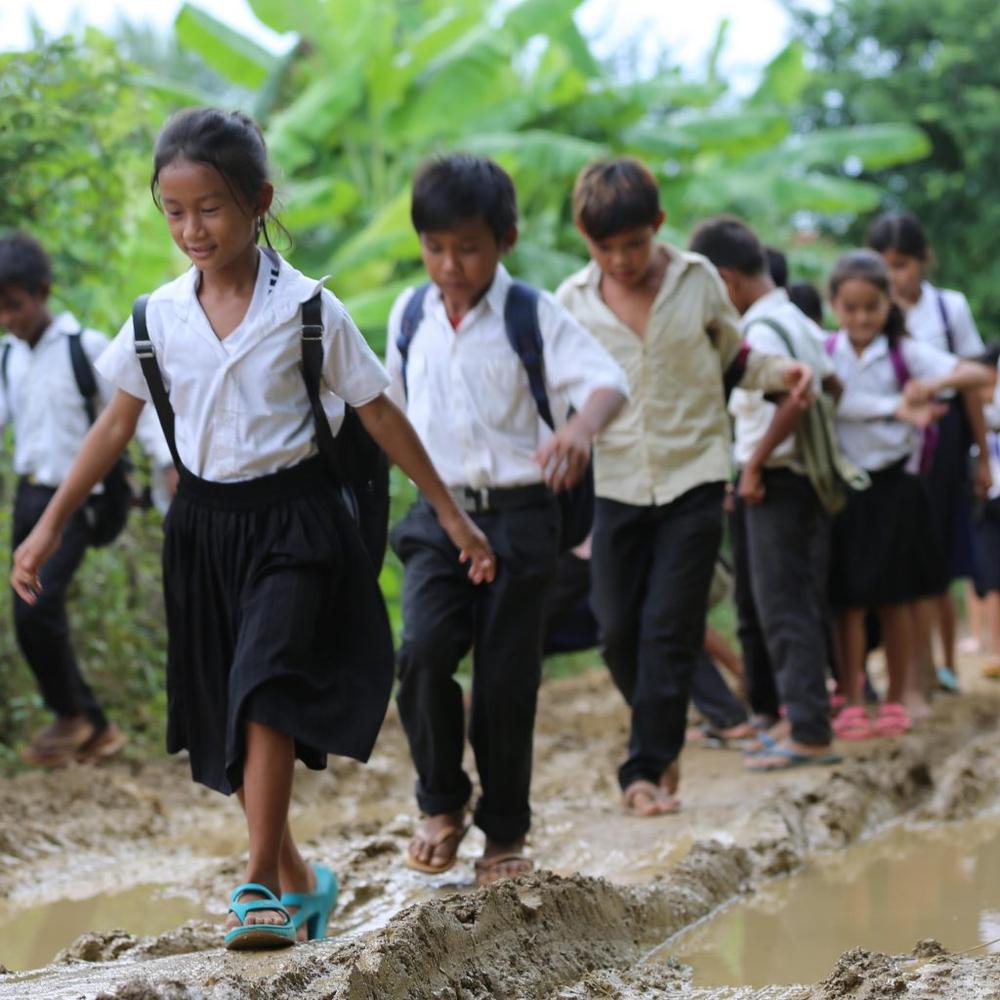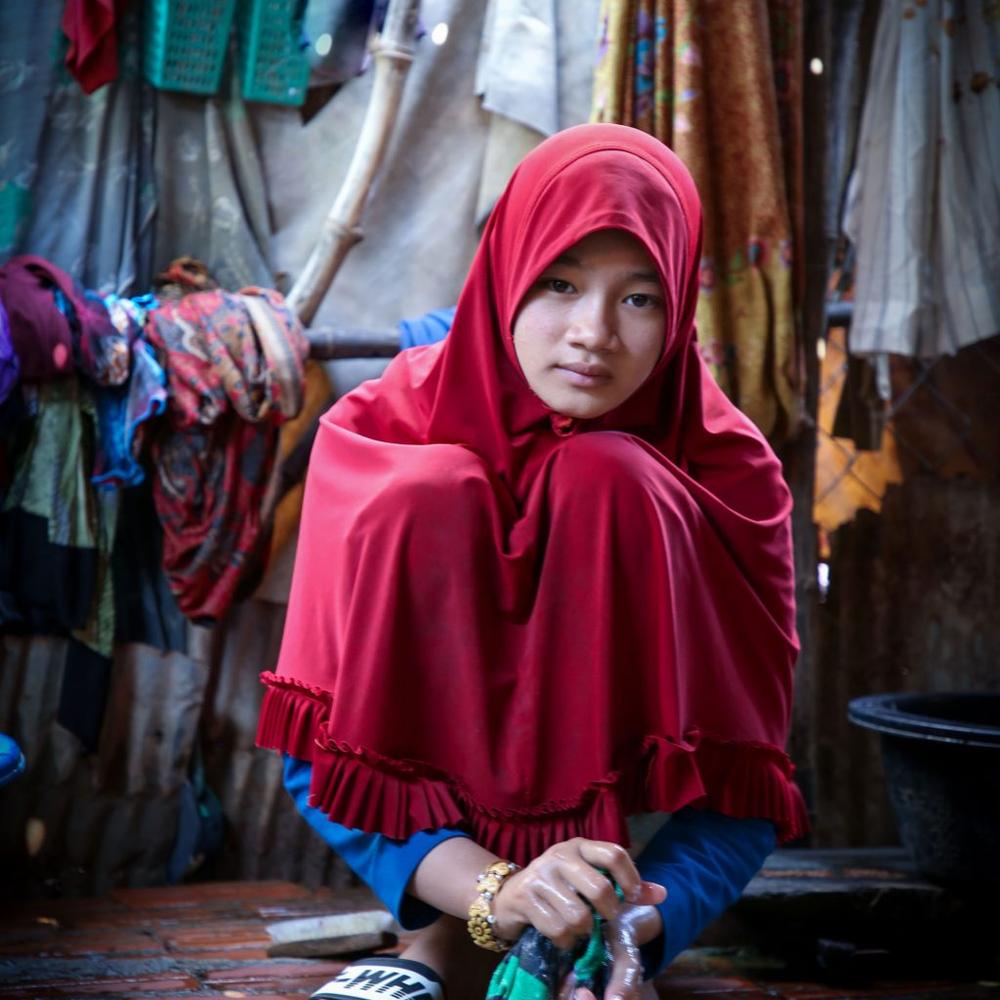How COVID-19 is threatening the education of girls in poverty
28 February 2021
•By Larissa


For many Australians, access to education is something we take for granted. But what if education was a luxury rather than a right? Unfortunately, this is the reality for many young girls living in disadvantaged communities. This has been further exacerbated by the COVID-19 pandemic.
According to UNESCO, 11 million girls may never return to school after the pandemic, with many experts fearing the cycle of violence and poverty will continue to impact the lives of millions of girls and young women for generations.
We’ve put the microscope on the lives of girls and young women and examine how COVID-19 is threatening the education of girls in poverty.
Children want an education


In 2010, a ChildFund Alliance global children’s survey, polled 3,000 children aged 10-12 from 30 developing countries across the world as well as children from Australia. Aimed at understanding what children deem important in their lives, the poll found that education, food and water were the three priorities children valued most.
Small Voices, Big Dreams
The COVID-19 pandemic has impacted the most vulnerable children around the world, says ChildFund Myanmar’s Country Director, Win May. Win May says that being out of school impacts children in many ways, including their health and wellbeing.
“Many children are becoming isolated because of the lack of social connection,” she says.
In April 2020, the Malala Foundation reports that almost 90% of the world’s countries had shut their schools in an effort to curb the rising transmission rates of COVID-19. Early data indicates that as of November 2020, 5-10% of children previously enrolled had not yet returned to school.
Attending school not only offers girls and young women skills and knowledgebut can help protect them from gender-based violence, abuse, human trafficking and early marriage. It’s more important than ever to help get vulnerable girls and young women return to school.
Girls leave school first and return last
Malala Yousafzai, an advocate for girl’s education, says that during a crisis, such as COVID-19, girls and young women are the first to be removed from school and the last to return. While studies have shown that men are more likely to die of COVID-19 than women on average, studies are also showing women are bearing the brunt of the social and economic fallout of the pandemic.
Even prior to COVID-19, for many families in developing countries, schooling can place a financial burden on the household. Girls and young women must often take responsibility for household and familial duties, while their male peers are given access to education.
The economic repercussions of the COVID-19 pandemic, can mean that for many girls and young women who were previously attending school, families may no longer be able to afford the costs.
What changes when girls have access to schooling
When girl’s have access to education, the long-term benefits are significant. In addition to learning vital literacy and numeracy skills, when a girl is education, she is more likely to:
- have children as an adult : 59% fewer girls below the age of 17 would become pregnant if all girls had secondary education;
- earn a higher income : every extra year of primary school boosts girls’ eventual wages by up to 20%
- save lives : a child born to a mother who can read is 50% more likely to survive past the age of five
- have a greater chance of ending the cycle of poverty . Most women invest 90% of their income into providing food, clothing and education for their children and community.
Girls who stop going to school


When a girl stops going to school, she is more likely to:
- experience abuse and exploitation as a result of practices such as child marriage: in many countries with the highest prevalences of child marriage, girls with no education are up to six times more likely to marry as children than girls with secondary education
- have fewer job opportunities in the future and work in low-paid, unskilled jobs as an adult
- have children who suffer from inadequate nutrition . Research shows that where mothers have completed secondary school, stunting rates for their children are reduced by more than 30%
- have children early ; adolescent pregnancies and births have a greater risk of health complications for young mothers.
Homeschooling made a little more difficult
For those girls and young women whose schools were closed down, online learning became the substitute for many. But what happens in rural communities where this is no access to technology?
For young girls like thirteen-year-old Alisae who lives in Cambodia, a lack of internet access meant she was unable to participate inremote learning, and eventually dropped out of school. To help her financially struggling family, Alisae stopped going to school to care for her younger brother and undertake household chores while her parents looked for work.
Alisae faces a real risk of never finishing her education. She hopes her younger sister Rosany does not follow in her footsteps and can be the first in their family to finish school and have a brighter future.
You can help girls and young women get back to school
At ChildFund we know the importance of education for girls and young women. Attending school gives female students a range of skills, and can help break the cycle of violence and poverty.
ChildFund’s education programs are focused on keeping girls and young women in school, and we are also providing additional support those students who face obstacles in returning to their education.
ChidFund hasalso launched a $32 million global appeal to support the children and families who are most impacted by the COVID-19crisis.
You can help by donating to the COVID-19 crisis appeal or by sponsoring a girl in a developing community to help ensure that they have opportunities for a brighter future.
